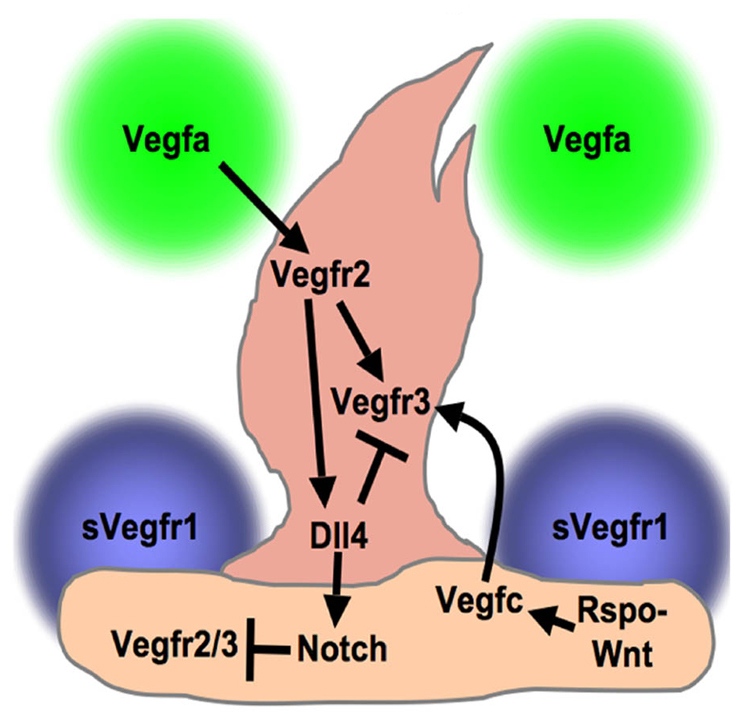Fig. 8.

Schematic model for sprouting angiogenesis. A proposed model for regulation of angiogenic sprouting based on this and previous studies. Our data showing endothelial-specific expression strongly suggest that the Rspo1-Wnt-Vegfc-Vegfr3 pathway functions in an endothelial-specific fashion. The diagram as drawn shows autocrine Rspo1 and paracrine Vegfc endothelial signaling, but we are not able to determine from the data presented in this manuscript whether signaling is autocrine, juxtacrine or both. However, the pan-endothelial (not tip- or stalk-restricted) expression of the components of this pathway suggests that it provides a permissive cue for angiogenesis, rather than a selective cue for tip cells. Other published studies have shown that Vegfa produced by surrounding tissue signals through Vegfr2 to induce Vegfr3 and Dll4 in the tip cell (Lobov et al., 2007; Tammela et al., 2008). Supporting stalk cells express soluble Flt1 (sVegfr1) and Notch. sVegfr1 helps sharpen the concentration gradient of available Vegfa to direct sprouting (Chappell et al., 2009), whereas Dll4/Notch signaling limits the number of tip cells specified (Hellstrom et al., 2007; Lobov et al., 2007; Siekmann and Lawson, 2007). Notch limits Vegf receptor expression in stalk cells and Dll4 suppresses Vegfr3 in the tip cell to inhibit hyperbranching (Hogan et al., 2009; Roca and Adams, 2007; Tammela et al., 2008).
